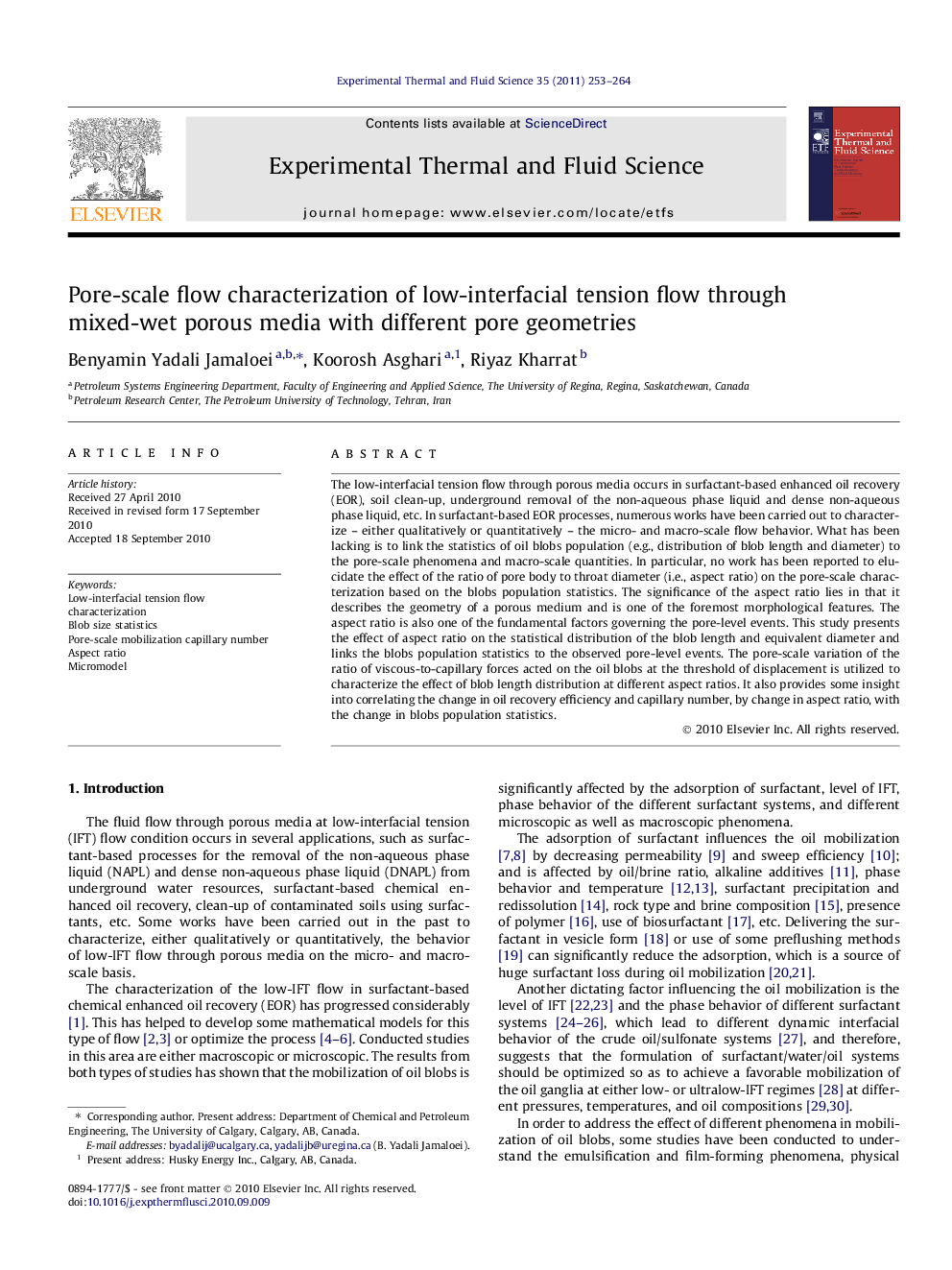| Article ID | Journal | Published Year | Pages | File Type |
|---|---|---|---|---|
| 652057 | Experimental Thermal and Fluid Science | 2011 | 12 Pages |
Abstract
The low-interfacial tension flow through porous media occurs in surfactant-based enhanced oil recovery (EOR), soil clean-up, underground removal of the non-aqueous phase liquid and dense non-aqueous phase liquid, etc. In surfactant-based EOR processes, numerous works have been carried out to characterize - either qualitatively or quantitatively - the micro- and macro-scale flow behavior. What has been lacking is to link the statistics of oil blobs population (e.g., distribution of blob length and diameter) to the pore-scale phenomena and macro-scale quantities. In particular, no work has been reported to elucidate the effect of the ratio of pore body to throat diameter (i.e., aspect ratio) on the pore-scale characterization based on the blobs population statistics. The significance of the aspect ratio lies in that it describes the geometry of a porous medium and is one of the foremost morphological features. The aspect ratio is also one of the fundamental factors governing the pore-level events. This study presents the effect of aspect ratio on the statistical distribution of the blob length and equivalent diameter and links the blobs population statistics to the observed pore-level events. The pore-scale variation of the ratio of viscous-to-capillary forces acted on the oil blobs at the threshold of displacement is utilized to characterize the effect of blob length distribution at different aspect ratios. It also provides some insight into correlating the change in oil recovery efficiency and capillary number, by change in aspect ratio, with the change in blobs population statistics.
Keywords
Related Topics
Physical Sciences and Engineering
Chemical Engineering
Fluid Flow and Transfer Processes
Authors
Benyamin Yadali Jamaloei, Koorosh Asghari, Riyaz Kharrat,
